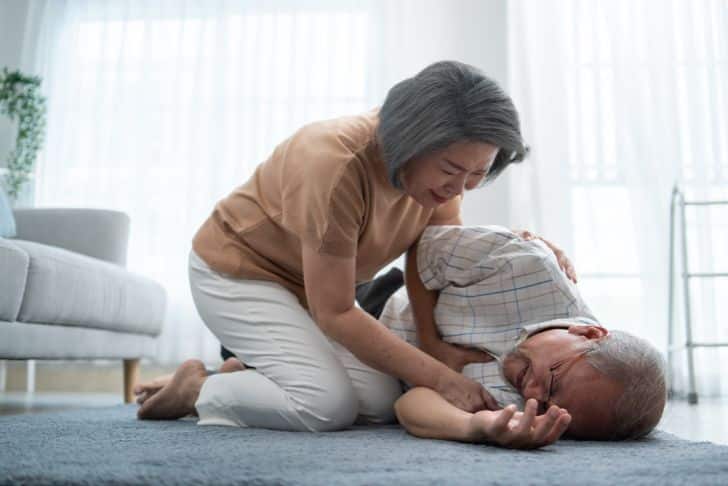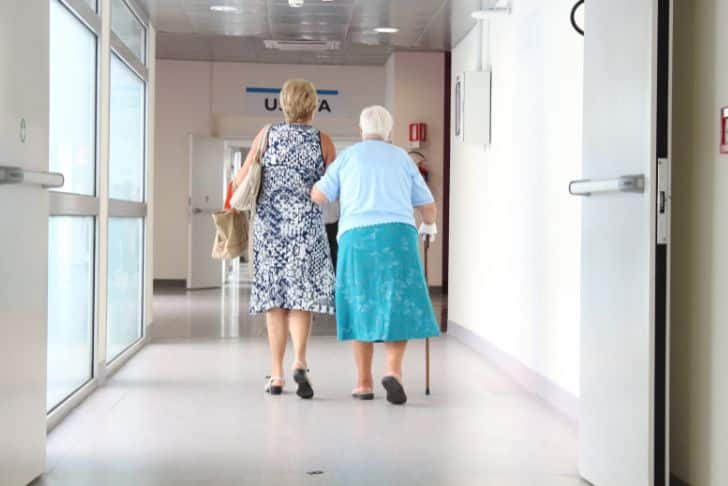In the quest to safeguard the lives of older adults, the Centers for Disease Control and Prevention (CDC) has adopted a strategic approach towards preventing falls and curbing their devastating impact. With falls being a significant threat to the health and independence of adults aged 65 and above, the CDC utilizes data-fueled research to develop preventive measures and reduce the incidents of falls. Notably, falls contributed to over 36,000 deaths amongst older adults in 2020, stimulating emergency department visits that surpassed 3 million. The resulting medical costs escalated to a staggering $50 billion, with a substantial 75% paid by Medicare and Medicaid. However, the CDC reassuringly asserts that aging does not inevitably lead to falls, and the likelihood of such accidents can be significantly diminished.

Understanding the Threat of Falls in Older Adults
Defining ‘older adults’
When we talk about ‘older adults’, we are generally referring to individuals who are 65 years or older. It is important to understand that aging brings with it a unique set of challenges and risks, including a heightened risk of falls.
Statistics on falls among older adults
Statistics indicate that a serious issue confronts older adults – in 2020 alone, over 36,000 deaths were caused by falls in this age group, making it the primary cause of injury-related mortality. Furthermore, healthcare facilities recorded 3 million visits in the same year due to falls among older adults, underlining the scale of the problem.
Consequences of falls
Falls can have dire effects on an older adult’s health and independence. In addition to the physical damage – like broken bones or traumatic brain injuries – falls can also severely impact an individual’s confidence, causing them to fear falling again. This fear can lead to a lifestyle that’s increasingly less active and more isolated, thereby reducing their quality of life.
Prevention of Falls Among Older Adults
Importance of fall prevention
The significance of fall prevention cannot be overstated. Preventing falls means maintaining the health, independence, and overall quality of life of an older adult. Moreover, it decreases the financial pressure on healthcare systems grappling with the medical costs associated with these falls.
Measures to prevent falls
There are several proven measures to prevent falls. From making homes safer by removing tripping hazards and improving lighting, to encouraging regular exercise to improve strength and balance. Regular health check-ups are essential to monitor any changes in health status that could increase the risk of falls.
The role of caregivers and loved ones in prevention
Caregivers and loved ones play a critical role in fall prevention. They can help in identifying potential risks, facilitating safe physical activities, ensuring regular medical check-ups, managing medications, and more. The active involvement of caregivers and family members in creating a safer environment can significantly reduce the risk of falls.
CDC’s Research and Data on Falls
Overview of CDC’s research activities
The Centers for Disease Control and Prevention (CDC) is actively involved in research and data collection to prevent falls among older adults and save lives. Studies, surveys, and data analysis provide insights to understand the reasons behind these falls and devise effective prevention strategies.
Use of data in fall prevention
Data from research and surveys help identify risk factors and trends associated with falls. This information becomes instrumental in crafting interventions, policies, and public health messages aimed at reducing falls.
Key findings from CDC research
CDC’s research has thrown light on certain key findings such as the significance of environmental factors in falls, the role of certain medications, and more. These findings have guided subsequent initiatives and interventions.
Economic Impact of Older Adult Falls
Cost of falls to the healthcare system
The economic cost related to falls among older adults is substantial. As per data, falls among older adults lead to approximately $50 billion in medical costs annually, taking a severe toll on the healthcare system.
Impact on Medicare and Medicaid
Of this cost, three-fourths are shouldered by Medicare and Medicaid, which underlines the significant pressure these falls place on these governmental healthcare services.
The burden of falls on older adults and their families
Besides the societal costs, the financial impact of these falls on older adults and their families is tremendous. From medical expenses to the cost of long-term care or modifications to the home, a fall can put severe financial strain on older adults, who are often reliant on fixed or limited income.

CDC Interventions for Fall Prevention
Description of CDC intervention programs
CDC has developed numerous intervention programs dedicated to preventing falls in older adults. These programs integrate research findings and utilize community resources to cater to the diverse needs of older adults.
Effectiveness of interventions
Studies indicate that these interventions have indeed been effective in reducing falls, improving physical function, and making homes safer for older adults.
How to access intervention resources
Information related to these programs and resources can be accessed through the CDC website and other governmental and public health websites. They offer resources ranging from instructions for safe exercise routines to guidelines for improving home safety.
Fall-Related Injuries and Conditions
Common injuries from falls
Falls among older adults can result in a range of injuries including fractures, sprains, head injuries, and even more severe conditions like traumatic brain injury.
Association of falls with hip fractures
One of the most serious fall-related injuries among older adults is hip fractures. These not only require a long recovery time and extensive rehabilitation but can also lead to significant limitations in mobility and independence.
Concussions and traumatic brain injury due to falls
Falls are also a leading cause of concussions and traumatic brain injuries among older adults, which can have long-term effects on cognition, emotional health, and overall functioning.

Medication Risk and Falls
Role of medicines in fall risk
Certain medications or combinations of medications can increase the risk of falls by causing dizziness, sedation, confusion, or other side effects.
Managing medication to reduce fall risk
Managing medications effectively is crucial in reducing the risk of falls. Regular reviews of medication can identify problematic drugs or combinations, and dosages can be adjusted or alternatives found.
Educational resources on medication and falls
Various educational resources offer information on medication management to reduce fall risk, helping older adults and their caregivers understand the links between certain drugs and the chances of falling.
Transportation Safety for Older Adults
Link between falls and driving incidents
There is an established relationship between falls and driving incidents among older adults. Health issues that can cause a person to fall can also affect their driving ability.
Transportation safety measures
Ensuring older adults have safe transportation options can help reduce the risk of both falls and traffic incidents. Family, friends, and local community services can often provide support.
Educational resources on transportation safety
Numerous resources can educate older adults and caregivers about the risks and prevention strategies related to driving safety and fall prevention.
Elder Abuse and Fall Risk
Understanding elder abuse
Elder abuse is a critical and heartbreaking issue that can manifest in various forms such as physical, emotional, financial, or neglect.
Elder abuse as a risk factor for falls
Unfortunately, elder abuse can significantly increase the risk of falls. Seniors who suffer from abuse might have increased physical and mental health issues, increasing their chances of falling.
Addressing elder abuse to prevent falls
Addressing elder abuse is an essential aspect of preventing falls. By identifying and intervening in instances of abuse, we can better safeguard the health and wellbeing of older adults.
Ongoing Initiatives and Future Directions
Current CDC initiatives for fall prevention
CDC’s current initiatives aim to prevent falls among older adults based on the findings of their numerous studies and the data they have gathered.
Emerging research and data trends
Emerging research and data trends offer exciting potential for fall prevention. Through continued research and updates to existing knowledge, we can hope for even more effective prevention strategies in the future.
The future of fall prevention strategies
Looking ahead, the future of fall prevention strategies lies in continued research, public awareness campaigns, community interventions, and harnessing technology to prevent falls and manage associated risks more effectively. Our combined efforts can create a safer environment for our older adults, where they can live with independence, dignity, and joy.
